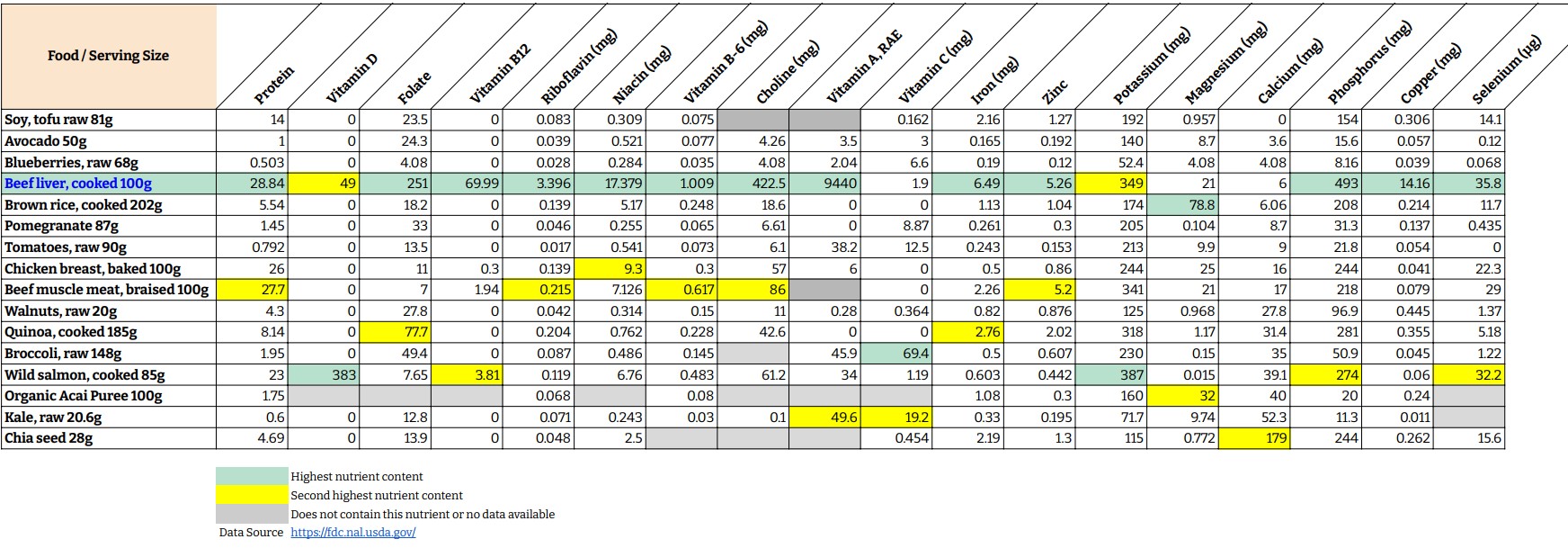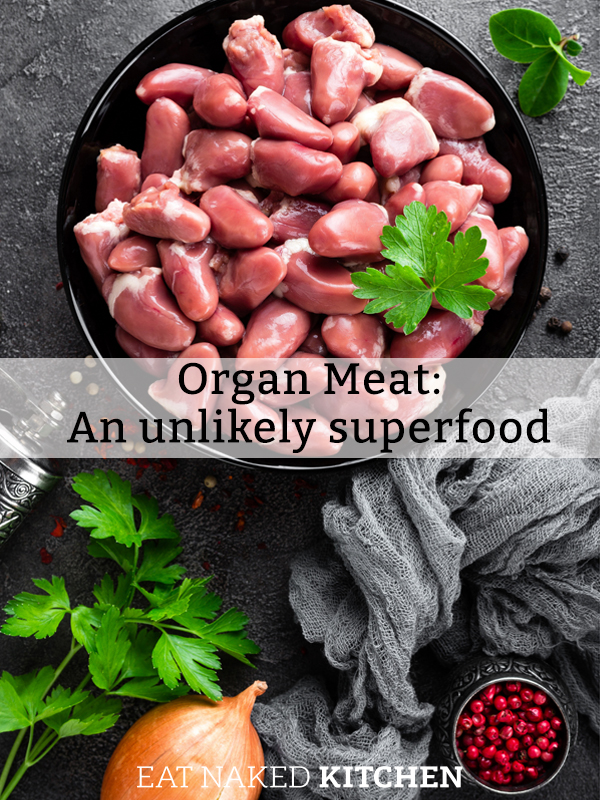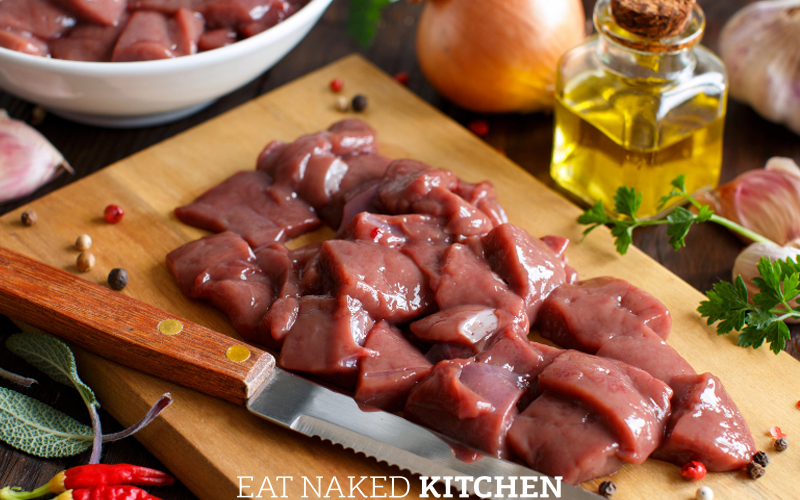One of my favorite conversations with a client is when I broach the topic of organ meat. Their facial reaction typically ranges from disgust to horror, to disbelief, to “you’re not going to ask me to eat that are you??” Very occasionally I’ll come across that rare gem who grew up eating paté or liver and onions, but the vast majority are deeply averse to the idea.
What if I told you that organ meats are actually superfoods? That if you can get past the ick factor they are some of the most nutrient-dense foods on the planet?
While most people recoil at the idea of eating organ meat, their bad rap is misplaced and usually misinformed. The most common misunderstanding is that because some of these organs are the filters of the body, they are loaded with toxins. That’s actually not the case: while yes, the liver and kidneys are both our body’s detoxification organs, those toxins aren’t actually stored in those organs. In fact, toxins are preferentially stored in fat in the body.
Organs (collectively known as “offal”) are some of the most nutrient-dense parts of the animal. Nicknamed “nature’s multi”, one serving of organ meat can provide a person with the daily recommended value of many vitamins and minerals that the average person struggles to consume regularly:
- Organ meat is high in folate, a nutrient that plays a key role in making and repairing DNA and producing red blood cells. Folate deficiency can result in immature, larger red blood cells known as megaloblastic anemia or cognitive impairment such as dementia.
- Closely related to folate is vitamin B12 or cobalamin. This critically important B vitamin is primarily found in animal products and has the function of making DNA and keeping the body’s nerve and blood cells healthy. A deficiency can result in memory loss, tingling in hands and feet, and several types of anemias. One 3.5 ounce serving of cooked beef liver provides 1,386% of the recommended daily intake (RDI) of B12. Our bodies store the excess B12 in the liver for later use, allowing the body to build up its own B12 stores.
- Organ meat is an excellent source of heme iron (the more absorbable and bioavailable form of iron, the nutrient that shuttles oxygen from our lungs to various parts of the body), copper (which helps the body absorb iron and form collagen) and zinc (which helps in wound healing, insulin production, and even taste perception). That same 3.5 ounce serving of cooked beef liver provides 34% of RDI for iron, 730% of the RDI for copper, 522% of the RDI for vitamin A, 201% of the RDI for vitamin B2 or riboflavin, and 35% of the RDI for zinc.
In fact, compared to many of the conventional “superfoods”, something as banal as beef liver puts them to shame. Here is how a single serving of beef liver stacks up against single servings of other foods touted as superfoods:

*Can’t read print this small? Click here to download the full table as a pdf.
- Beef liver has 292% more folate than kale
- Beef liver has 1469% more B12 than salmon
- Beef liver has 1198% more iron than chicken breast
- Beef liver has 25% more potassium than avocado
Now, if you’re starting to tune out and feel like preparing beef liver or chicken hearts is outside your comfort zone, we’ve got you covered. If you haven’t heard, our very own Chef James Barry has created a new food product that is one of the easiest and yummiest ways to get the health benefits of organ meats without having to wrap your mind or your cooking skills around preparing it.
Introducing: PLUCK, an organ-based seasoning that gives you all the benefits of organ meat without having to learn new culinary skills. Pluck contains beef liver, kidney, heart, spleen and pancreas…many organs that you’d be hard-pressed to find available in your local store or even online.
How does Pluck taste? Well, it doesn’t taste like organs. It has an umami or savory taste to it; slightly smoky (from the smoked paprika) and slightly salty. What I love is that I can put it on anything from fish and vegetables, to movie night popcorn and m family gets the nutrients and vitamins from organ meats without having to talk my kids into eating liver. Plus, it actually makes food taste better. I notice when I make a meal that is good, all I need to do is add some Pluck and the meal becomes great.
It’s simple to use, requires no new habits, and you’re getting additional nutrients in every meal you use it with. Sounds like a win to me! Order Pluck today and save 10% on your first order using the code EATNAKED or using this direct link.
Or purchase whole organs at your local meat shop, at the farmer’s market or online at sites like US Wellness Meats.
No matter your preference, adding organ meats to your diet is something I highly recommend. For recipes and tips, make sure to check out eatpluck.com and to follow @eatpluck on instagram and facebook. For the upcoming holiday, PLUCK is sharing a Thanksgiving Recipe Guide with our readers. Grab your copy for ideas on nutritious and delicious holiday meals.




